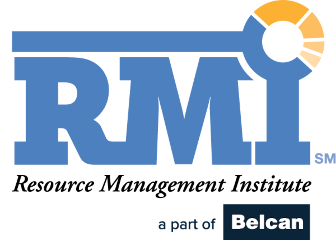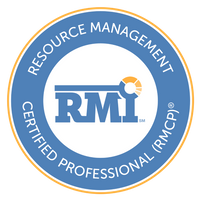There are only 24 hours in the day – and many of those hours are not working time. The ability to manage the human capital in your service organization directly impacts your ability to deliver projects successfully. The more efficiently you can place people on assignment, the more clients you can keep happy.
Managing the resources needs of the business, planning availability and tracking utilization is so important that many companies are now investing in a Resource Management Office (RMO) capability to work alongside their existing Project Management Office (PMO). The function of the RMO is to tackle the challenges related to forecasting, employee engagement, talent management, staff deployment and more. But how do you measure the work of the RMO?
KPIs for the Resource Management Office
What gets measured gets managed – you’ll have heard that before. The work of the RMO is no different. In a resource management role, you should be looking at metrics that will help you change processes and improve the way services are delivered. The more intelligence you can gain about how resources are utilized in the organization, the easier it is to identify both quick wins and longer-term strategic improvements. Resource management software can easily track this data for you, and present tailored reports to help you make the best decisions for your teams.
Below, we look at four KPIs the RMO team can use to manage efficiency and track improvements with resource management.
Resource Request Cancellations
Track the number of resource request cancellations over time. That will give you a single figure. However, the number alone is of little value. You also want to record why the resource was cancelled. Were they booked in again at a later date (pointing to an issue with scheduling, or project delay) or was the work terminated for good?
Create a taxonomy of common reasons for cancellations, and allocate each cancellation to a reason. Track the revenue impact of each cancellation as well. Every project day cancelled is a day you aren’t paid. Even if the work is rescheduled for the future, it may not be possible to allocate that resource to another client at short notice, so they aren’t able to carry out revenue-driving activity during that period.
Over time, you’ll get rich data about why resources are cancelled and what revenue impact that has for the organization. Look out for trends. Is there one client that cancels projects more commonly than others? Is there a particular type of resource that gets cancelled more than others, perhaps software testers, or a category of consultant? This can help you understand the thought process for clients. You may be able to influence future cancellations by reiterating the benefits of a particular type of work, or by addressing the underlying cause of cancellations.
Resource Extensions
Another good KPI to track is resource extensions. A resource extension happens when a resource is extended on a program. Let’s say an individual was scheduled to work on a client project for three weeks. At the end of three weeks, they are extended for another fortnight.
On the surface, that might look like good news. After all, you can bill the client for an additional 10 days of work, and the resource is fully booked for longer. But what about the project booked to start at the same time? Now that client is facing a delay because the resource is still finishing up their last job. However, resource extensions can point to other issues. If they are happening frequently, it could be because your estimating process is not adequate. Are the sales teams effectively collaborating with delivery teams to ensure they fully understand what work is required to deliver the project?
Check your data for trends. In particular, look to see if any client (or type of client) is requesting extensions more than others. This could help you understand more about their industry or the complexity of their work, leading to better estimates for projects in the future.
Utilization
Any RMO should be able to track utilization. Utilization is a measure of how much time a resource spends on productive (in most cases: revenue-generating) work. Track how many resources are not being utilized at any given time, and also who those resources are. Again, you are looking for trends. Is it a few individuals that seem to be on the bench longer than others? Why could that be?
It’s easy to see that you want your staff to be as utilized as possible. A resource scheduler can help plan the work and match incoming projects to the available resources. If you can identify staff who are routinely under-resourced, look at their skills profile and how closely it matches the incoming work. Could they be retrained and upskilled so they can contribute more broadly to projects? Or is there another underlying HR issue that is stopping managers allocating them to client-facing work?
Time to Staff
Finally, look at how long it takes to staff a project when the project is signed off and ready to go. This time period equates to how much time is lost figuring out staffing levels and finding resources. The smaller you can make the time to staff period, the faster your projects get started. People spend less time not being utilized and more time client-facing. Clients are happier because they don’t have to wait so long for work to begin.
Once you’ve got enough time to staff data, you’ll be able to see what types of projects or clients take the longest. With that intelligence, you can start to plan staffing for those projects long before the project is signed off, so that you can minimize the lag when the project is eventually ready to start. There might be other improvements you can make as well: review the process for requesting and allocating resources to see if you can streamline it with the right tools.
These are only four of the KPIs you can use to track resource management. There are many more metrics that enterprise-grade RMO software can track to support your Resource Management Office: check out this article for another five resource management KPIs you can use today.
Tracking Dashboards
Calculating KPIs for resource management is straightforward if you use enterprise-wide PSA tools to help. All your data, from project proposal through to project closure, is in the software. Resource dashboards can elevate relevant metrics and create simple reports to help you cut through all the data points to get to the real intelligence.
The more information you have, and the easier it is to interpret that information, the more you can improve your processes. The changes you make might feel subtle, but if you can cut a few days off each resource request, get better at estimating accurately and minimize under-utilization in the team, you’ll make a huge difference to the bottom line and your customers’ satisfaction.
Are you in a resource management role? Learn how Upland PSA combines resource management, project management, and timesheets to balance employee satisfaction and achieve successful project and customer outcomes. View the video now.

Heather Black
Heather Black is the Director of Marketing, Project and IT Management Solutions for Upland Software. She is responsible for helping define the market for Upland’s innovative PSA solution. Upland PSA is an enterprise-class professional services automation software that helps build a predictable and profitable services business. With Upland PSA, customers can automate and streamline business operations, increase collaboration, and deliver greater customer outcomes.




